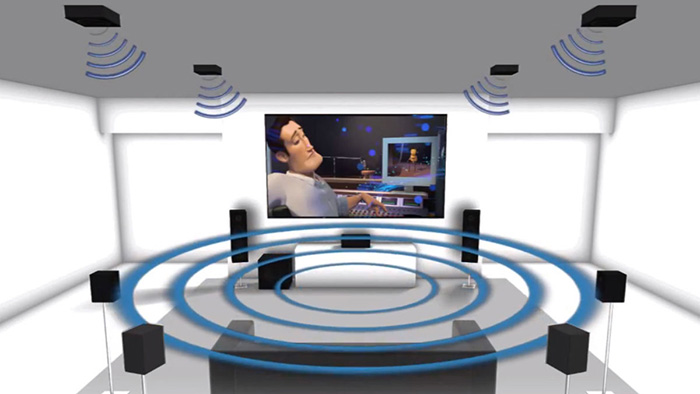Dear BPBS,
I've been shopping for a receiver lately and want to get one that does the immersive audio stuff (Dolby Atmos, DTS:X). Some of the receivers say they're 7.2 and other say they're 5.1.4. What do I need and what do these numbers really mean? And can I do the same thing with a soundbar instead of buying a receiver and lots of speakers?
Thanks,
-Peter in Pittsburgh
Hi, Peter,
Thanks for your question. It's one that we've gotten often over the years.
As the technology of audio and video reproduction advances, things have gotten more complicated. Monophonic tube radios evolved into stereophonic HiFi systems, which in turn evolved into multi-channel surround sound systems. The most recent advance in surround sound -- "immersive sound" -- reproduces sound in all directions, not just in front of and behind the listener, but above our heads too. As these technologies have advanced, a common shorthand has arisen in order to identify the different options available to consumers. And those are the numbers you're asking about.
This series of 3 numbers can be used to describe the number and type of channels in any sound system, from a simple soundbar to an advanced A/V receiver to a professional movie theater surround sound system.
The format is "x.y.z" where:
If a system does not have any dedicated height channels, then the last digit is left off. Here are some examples:

64.4.32? Sure? Why Not?
The numbers can go even higher. Some theatrical immersive sound systems utilize dozens of speakers to reproduce sound as realistically (and immersively) as possible. But a 7.1.4 system is where we find most home theater receivers and speaker systems max out. And in a large living room or even a dedicated home theater, a 7.1.4 channel system is probably good enough to create an enjoyable audio experience anywhere in the room.
It's important to note that not every speaker represented by one of the numbers needs to be in its own physical box. A "3.0" soundbar may have all three of those speakers: front left, center and front right - in a single speaker cabinet. Similarly, not all "height channel" speakers need to be physically placed above the listener in the ceiling or high on a wall. Some height speakers are placed at the listener's ear level but are angled up in order to bounce sound off the ceiling. This gives the illusion of sound coming from above when it's actually being generated from ear height or below.
Can a Soundbar Do That?
While a receiver with dedicated speakers will generally give you the best results, some companies are making soundbars that provide a pretty realistic immersive surround experience. New soundbars from companies such as Yamaha, Samsung and LG are designed to bounce sound off both the side walls and the ceiling in order to create a "5.1.2" immersive surround sound experience from a single soundbar and dedicated subwoofer. These types of systems can be effective at generating an immersive soundfield, but for best results, the listening room must have regular wall and ceiling surfaces that are reflective enough for sound to bounce off and reach the listener's ears from the right directions.
In general, you will get better overall results from a receiver or preamp/amp system that uses dedicated height speakers installed on or in the ceiling, but for those in smaller spaces or in apartments where running a lot of additional wires can be problematic, these reflective and virtual surround sound options offer a viable alternative.

Also, to answer the last part of your question, some receiver makers tout their receivers as "7.2" or "7.2.4" to designate that they have dual outputs for subwoofers, this can be misleading. In many cases, the two subwoofer outputs are not independently adjustable, so they really shouldn't be counted as separate channels. While it is recommended in many listening rooms to use more than one subwoofer (to compensate for standing waves and room modes), the fine adjustments in level and phase for each subwoofer are typically done on the subwoofer itself, not in the receiver.
But the "7" in that 7.2 number describing a receiver is important. A receiver that is designated as 7.1 or 7.2 has seven built in channels of amplification. So a Dolby Atmos capable receiver that is described as "7.2" can actually be configured two different ways: 5.1.2 (using two amps for the height speakers) or 7.1 (using all seven amps for traditional surround sound, with front, side and rear speakers). A receiver designated as "9.2" has nine channels of built-in amplification. This type of receiver can be configured for 5.1.4 or 7.1.2 Dolby Atmos systems.
I hope that helps!
Related: